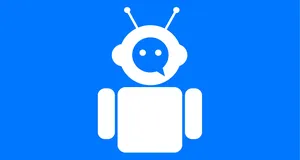oobabooga Webui for chat models
Gradio Web UI for Text Generation
What Is It?
Easy Version
Imagine you have a super-smart robot that can write stories, answer questions, or even chat like a human. This Gradio Web UI is like a remote control for that robot. It’s a website where you can tell the robot what to do and see what it writes back.
Why Use It?
- Easy to Use: It’s like playing a video game! You don’t need to know how to code to use it.
- Multiple Modes: You can use it like a notebook for school, like a chatbox, or even in a default mode that’s super simple.
- Many Smart Robots: You can switch between different types of smart robots (called models) to see which one you like best.
- Cool Features: You can do things like load different settings on-the-fly, or even train a new setting yourself!
How to Use It?
Step 1: Install It
Easy Way
- Download a ZIP file for your computer (Windows, Linux, macOS, or WSL).
- Unzip it and click on “start.”
For Tech-Savvy Kids
- Use something called “Conda” to install it manually. This is a bit complicated but gives you more control.
Step 2: Start It
- Open your computer’s command line.
- Type some commands to go to the folder where you installed it.
- Type
python server.pyand press Enter.
Step 3: Use It
- Open your web browser and go to
http://localhost:7860/?__theme=dark. - Now you can start using it! Choose a smart robot, type something, and see what it writes back.
Extra Tips
- You can download more smart robots from a website called “Hugging Face.”
- If you want to update it later, you just need to run some simple commands.
The Technical Details
The project is a Gradio web UI designed for text generation using large language models. It aims to be a comprehensive tool similar to AUTOMATIC1111’s stable-diffusion-webui. The UI supports various features:
Interface Modes
- Default mode
- Notebook
- Chat
Model Support
- Multiple backends like transformers, llama.cpp, ExLlama, AutoGPTQ, and more. Models can be downloaded on huggingface.
Additional Features
- Dropdown for model selection
- On-the-fly LoRA loading and training
- Precise instruction templates for chat mode
- Support for 4-bit, 8-bit, and CPU inference
- Efficient text streaming
- Markdown and LaTeX output
Installation
- One-click installers for Windows, Linux, macOS, and WSL.
- Manual installation using Conda is also available.
Model Download
- Models can be downloaded from Hugging Face and placed in a specific folder.
Starting the Web UI
- Activate the Conda environment and run the server script.
The project is well-documented and offers various customization options, including settings for multi-user mode, model loader, and hardware acceleration.
GitHub Repository
For more details, users can refer to the project’s documentation
Watch a YouTube Video
Watch a YouTube video on how to install oobabooga web UI here youtube install instructions

